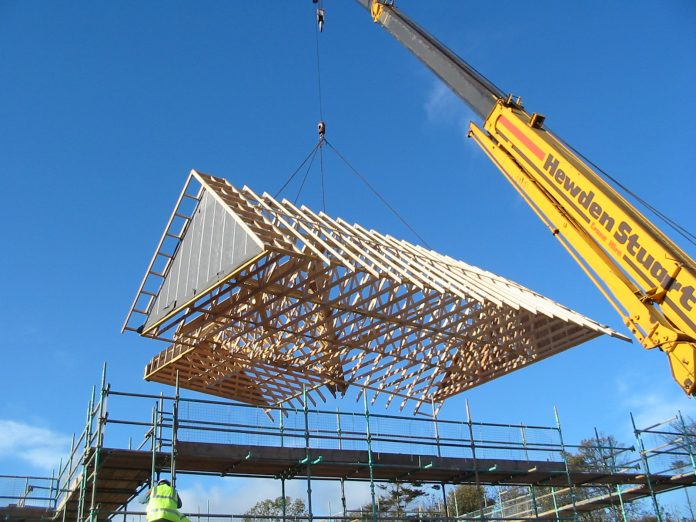Offsite construction can contribute to improvements in delivering better quality buildings, says a report that calls for urgent changes in the culture and processes of housing construction. Ron Alalouff of TRADA reviews its conclusions
The Housing Forum brought together experts from across the supply chain to consider the main risks of current methods of developing and refurbishing residential property. Its conclusions cover the whole process from project set up to handover on completion.
The report, Stopping Building Failures, identified several key problems:
- Regulations and guidance that are complex and unclear.
- A lack of clarity around roles and responsibilities.
- A race to the bottom in procurement.
The Housing Forum study is centred on three key areas:
- Procuring for quality.
- Harnessing innovation to prevent defects.
- Building defect-free homes.
Procuring for quality: The recommendations
Under procuring for quality, Recommendation 1 is that projects should be set up to reflect clear value judgements linked to initial cost plans. This vision should include aspirations for development, profit and contingency that must be agreed at the outset by the entire project team and should be a “golden thread” that ties-in initial (and costed) quality aspirations right through to delivery.
Recommendation 2 says clients should procure projects using contracts that support integrated teams, promote value and develop tight performance specifications. This includes adopting fair, simple and transparent procurement processes and enabling early contractor involvement in design, using tender processes that help meet project objectives. The focus is on quality and how it will be delivered, incorporating more prescriptive specifications to avoid a drive down to minimum standards.
Recommendation 3 urges industry and clients to work together to develop new materials, techniques and training to help clients gain a better understanding of the appointment and briefing process.
Recommendation 4 calls on the insurance sector, construction industry and government to work together to further develop integrated project insurance procurement as a means of driving integrated teams and project efficiencies, and to provide sustainable financial margins for firms.
Recommendation 5 urges the wider adoption of Building Information Modelling (BIM) to provide a continuous record of decisions, actions and transactions throughout the project to enable improved coordination and provide the opportunity for better facilities management and collaboration.
Key to the timber construction sector is Recommendation 6, which calls for early consideration of how Design for Manufacture & Assembly (DfMA) and Modern Methods of Construction can be used to reduce workload and improve productivity and safety on site.
 Defect-free homes
Defect-free homes
Critical changes that would improve quality assurance processes on site include:
Greater emphasis and training for on-site inspection methods, particularly for those managing construction projects (Recommendation 7).
More use of clerks of works to provide impartiality and a quality safety net; more funding to train people for this profession (Recommendation 8).
Greater use of technology to document construction quality, such as the use of tablets and software on site; BIM and imaging and sensors to provide evidence that work has been completed to standard (Recommendation 9).
Clients making the development of skills, such as the training of apprentices, part of the selection criteria to help plug the skills gap (Recommendation 10).
Greater clarity about project team roles including the role of clerk of the works to maintain the golden thread of project quality (Recommendation 11).
Greater use of pilots or benchmark samples/mock-ups to assess quality of workmanship when choosing suppliers (Recommendation 12).
Longer-term recommendations for housing construction
The report calls for tighter controls on the competencies of the workforce to raise quality. This includes mandatory licensing of people working in life-critical trades, such as passive fire protection and structural systems, and over time, the widening of this requirement to other construction trades.
Key to a better inspection regime would be the introduction of ‘hold points’ in the construction process, whereby critical stages would be checked and verified by independent quality inspectors before further work can proceed. This could be tied to the payment process for the main contractor and subcontractor.
“The tragic events that unfolded at Grenfell Tower have brought failings across construction into even sharper focus,” says the introduction to the Housing Forum report.
“What has become clear is an urgent need to change culture and processes.”
Grenfell will be the catalyst for changes that many in the sector would say are long overdue. But alongside the regulatory reforms that must ensue, how can we bring about a much-needed culture change so that all homes get built the way they are designed, to the highest quality standards?
“Pervasive reports of building failures in both new build and refurbishment and maintenance of existing stock are undermining consumer confidence. In an era when large housing associations and councils will be embarking on major housing construction projects … it is essential the housing construction sector addresses and resolves the issue of quality.”
Commenting on the report, Nigel Ostime, project delivery director at Hawkins/Brown, said improvements in quality and productivity can be significantly enhanced with offsite manufacture, including the use of timber frame and CLT.
“The report sets out 14 recommendations running through the whole project process. A key message is the need for procurement reform, without which it will be difficult to effect change, and in particular the need to design for manufacture and assembly rather than traditional construction,” he said.
“It also highlights the benefits of modern methods of construction and greater use of off-site to improve both quality and productivity. This includes timber frame and cross-laminated timber, which also have benefits in reducing carbon.”
TRADA
Tel: +44 (0)1494 569603
Twitter: @TRADA_
LinkedIn: Trada
Facebook: Trada Home














